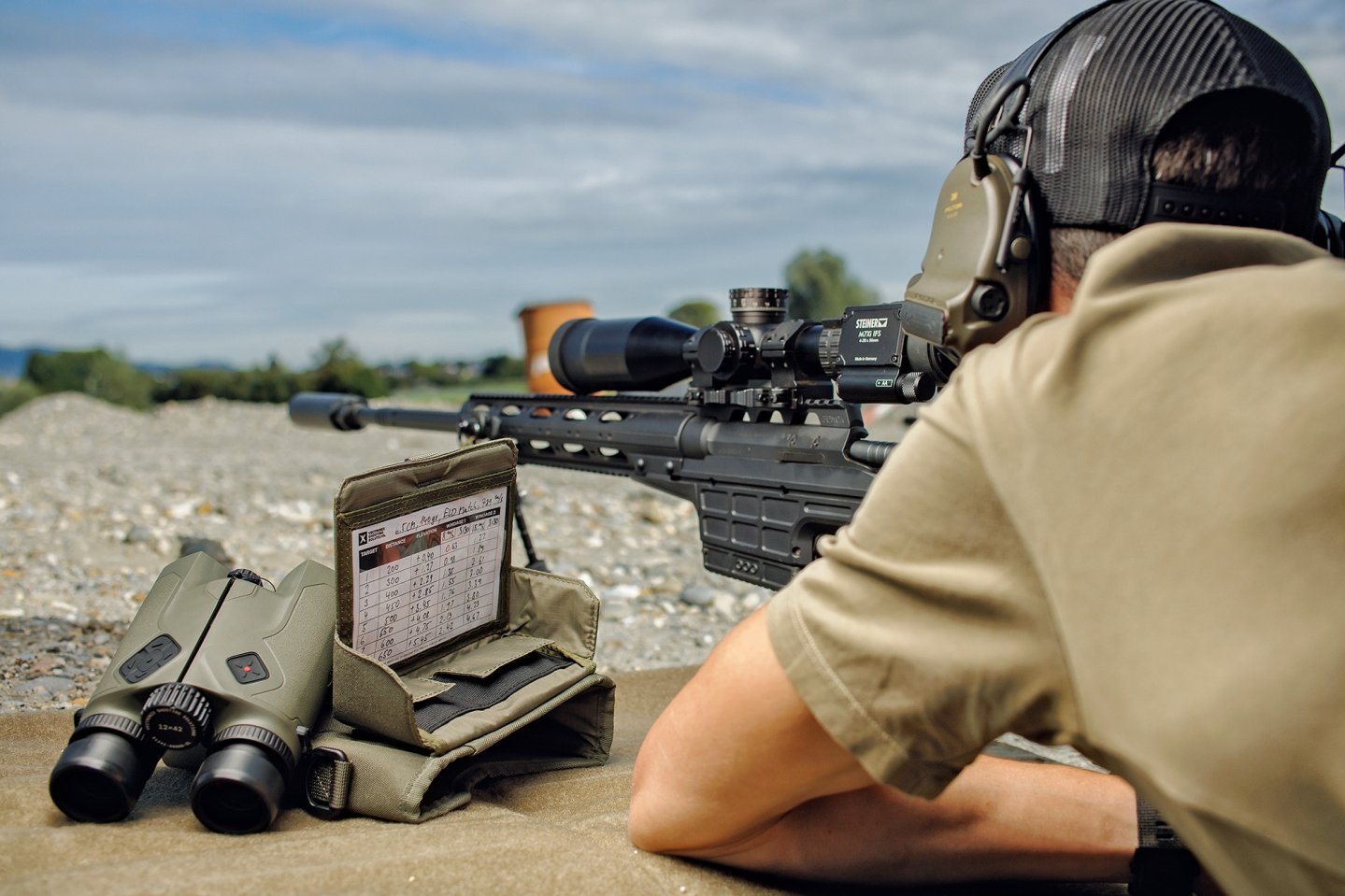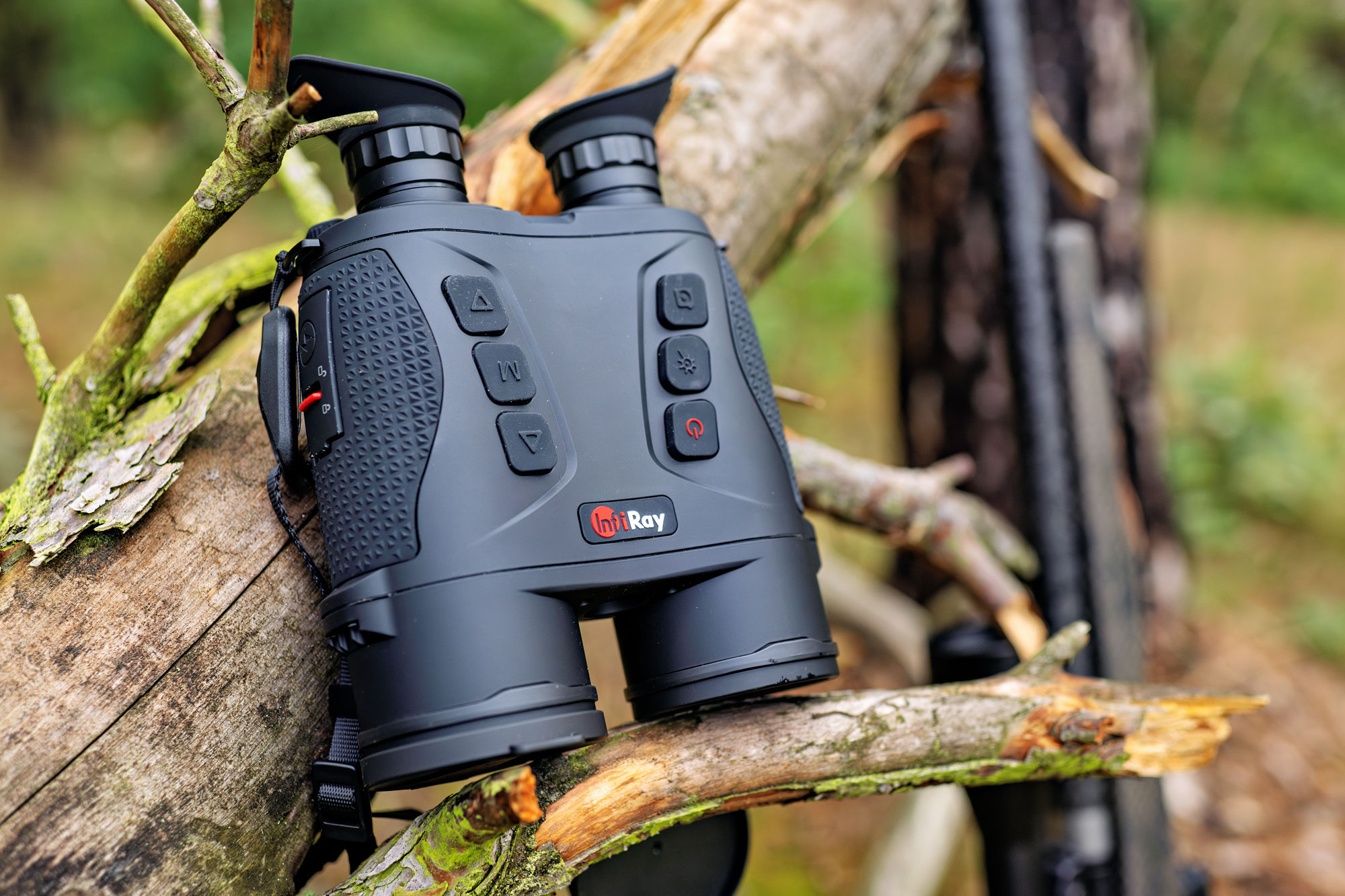104 years ago, Jacob Schmidheiny, Robert Helbling and Heinrich Wild founded the company Wild GmbH in Heerbrugg, in the Swiss Rhine Valley, with the aim of revolutionising artillery surveying. This resulted in the first high-precision T2 theodolites, which are still in use today, albeit in a modified form and with different features. The first electronic theodolites were developed in the 1970s, followed shortly afterwards in the 1980s by the first GPS receivers from Wild. Part of the Leica Geosystems Group since 1997, this division was renamed Leica Vectronix in 2002. Shortly afterwards, the group, which merged in 2005, took over Safran from France. Since then, the Swiss company has operated under the name Safran Vectronix AG.
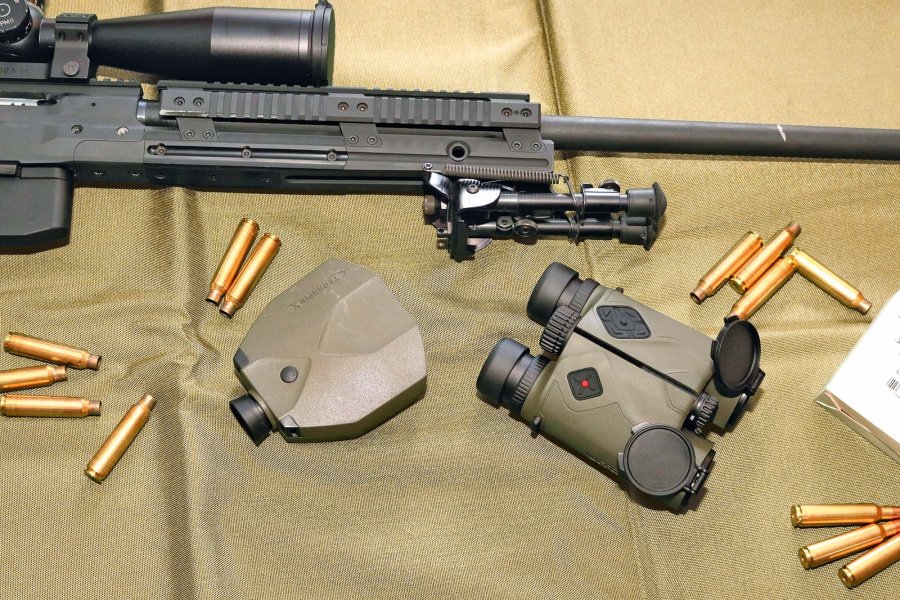
Until 2018, top-class optoelectronic devices were developed and manufactured at the site in St. Gallen exclusively for the army, police and specialised units. With the Terrapin X, the Swiss company presented its first optoelectronic device for the civilian market in July 2018. At that time, the monocular laser rangefinder was already capable of measuring distances of up to 3,000 metres in laser class 1. The device can communicate with a smartphone or a Nielsen-Kellermann or Kestrel Weather Meter via Bluetooth. A minimum measurement distance can also be specified via the app so that obstacles in the measurement path such as grasses, branches, fences and the like are ignored. On the software side, many other additional functions were implemented in 2020, which can be used via the Terrapin X app. These include, for example, connectivity with many ballistics programs. After the Terrapin X was widely used by long-range shooters and the German Federal Office of Bundeswehr Equipment, Information Technology and In-Service Support (BAAINBw) ordered 165 Terrapin Xs, the Swiss optics specialists felt vindicated and expanded their product portfolio for the civilian market at the end of 2024.
The new laser rangefinder called Vector X is a binocular with an integrated, long-range laser rangefinder and ballistics calculator with Applied Ballistics software. Sensors in the device also measure the air pressure, temperature, angle of inclination and the compass direction using a digital compass. On the software side, however, the Vector X can do much more. It would take months to actually test all the functions and options in a wide range of weather conditions. Therefore, this article will first provide a rough overview of the technical features and the most important functions.
Scope of delivery of the Vector X from Vectronix Shooting Solutions
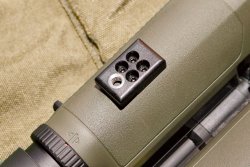
Usually, the accessories included with test guns or optics are mentioned in one or two sentences at most. With the Vector X, however, it is so extensive that it deserves its own paragraph. The device is supplied in a spacious and lined soft case made of Cordura. The bag contains several compartments and a partition that can hold accessories. Overall, the case makes a very high-quality impression. The scope of delivery also includes an eyepiece protection cover, two flip covers on the lens side, a tripod adapter (¼" standard thread), a neck strap, an extended battery compartment cover for holding more powerful 18650 Li Ion batteries, an optics cleaning cloth and the obligatory operating instructions, all individually packed in plastic bags. The screw-on attachment boosters on the lens side, also known as range enhancers, which increase the magnification of the Vector X by 40 per cent (1.4x), are optionally available for 649 euros. Vectronix recommends using the range enhancers with the MSR-DMR reticle designed for this purpose, as this is calibrated for both magnifications, i.e. with and without range enhancers. Also optionally available are adapters for Arca rails from Area 419 and the 1.5-inch universal quick-release plate from the manufacturer Really Right Stuff as interfaces for tripod heads. Tenebraex offers anti-reflection devices with an integrated honeycomb filter for the Vector X.
The first, external impression of the Vectronix Vector X
As with the Terrapin X, the housing of the Vector X has a shock-absorbing and non-slip rubber armouring in Tac Grey colour. The housing itself, which houses the optical and electronic components, is made of magnesium. The center adjustment hinge for setting the interpupillary distance is damped and runs absolutely smoothly. The eyecups can be unscrewed in four locking stages. As a general rule, the eyecups should be unscrewed without glasses and screwed in with glasses. The dioptre adjustment is located directly behind the eyecups on each eyepiece. This can be individually adjusted from ±4 dioptres to the respective eye. The adjustment rings are knurled and made of anodised aluminium. The focus wheel is located between them. This is responsible for focussing the depth of field. In general, the higher the magnification of the binoculars or riflescope, the smaller the depth of field range. Technically correct, the depth of field is inversely proportional to the square of the magnification or, to put it simply: the higher the magnification, the more precisely you need to focus at the respective distance, especially when changing at short distances. This means that the Vector X with 8x magnification has a greater depth of field range than its counterparts with 10x and 12x magnification, but a smaller target image magnification.
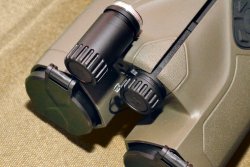
The Vector X has a so-called internal focussing system so that the binoculars are protected from dust and moisture ingress. The focus wheel is knurled and made of anodised aluminium. The battery compartment is located opposite the focus wheel. As standard, it is designed for the widely used 3V CR123A batteries. According to Vectronix, up to 10,000 measurements are possible at 20°C. However, Vectronix supplies an extended battery compartment cover with every Vector X, which allows operation with rechargeable batteries of type 18650. These batteries have a significantly higher capacity and should allow up to 20,000 measurements. These batteries are also particularly useful for use at low temperatures. Vectronix also uses a knurled cover made of anodised aluminium. A small cover is screwed to the underside of the housing. Underneath this is the mount for the tripod adapter with UNC thread (¼" x 20) included in the scope of delivery. There are two control surfaces on the top of the housing. On the right is a slightly raised red button that operates the range measurement. On the left-hand side is the digital pad, or D-pad for short, with four arrow buttons and another button in the centre for menu selection. The Vector X is protected to IP67, meaning that the binoculars are completely dustproof and impermeable to water ingress at a depth of 1 metre for 30 minutes. To summarise, the first impression of the Vector X is first-class. It sits very comfortably in the hand, the control panels are easy to reach and the use of magnesium for the housing and the milled and anodised components for the adjustment wheels and cover instead of cheap plastic underline the high standards that Vectronix sets for its product.
The Vectronix Vector X rangefinder in its first practical test
One of the main tasks is the repeatable and precise measurement of distances. And of course, the further, the better. Long-range measurements are best achieved with the following three features: a powerful laser, low laser beam divergence and a very precise and fine target reticle. But first things first. Lasers are categorised into laser classes according to their power, wavelength and other parameters. In Europe, lasers in civilian rangefinders must comply with the lowest laser class 1. This laser is therefore eye-safe, even if it were focussed by optical devices. The US version of the Vector X has a laser of the next highest class, 1M. This laser class is still eye-safe, but the focussing in optical devices means that 100% eye safety cannot be guaranteed.
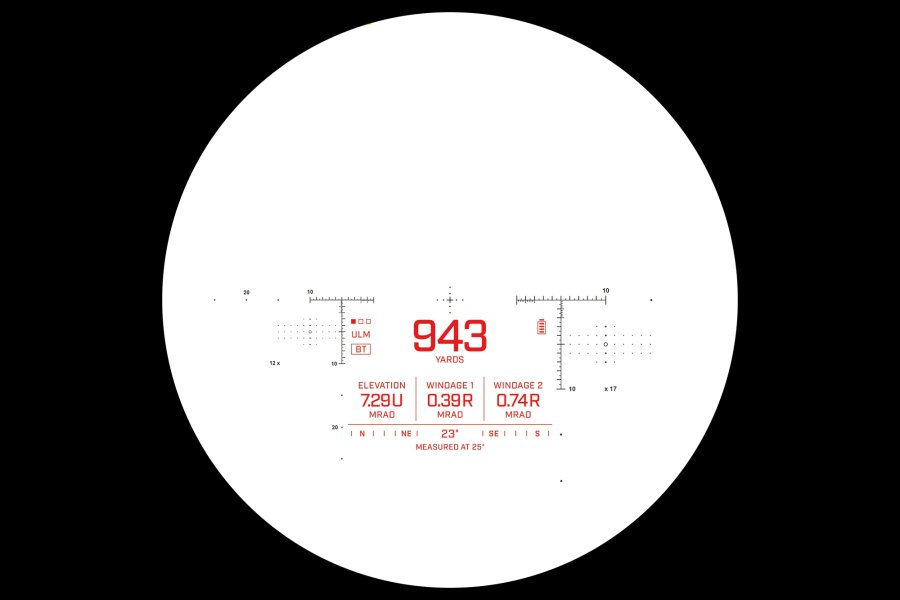
Laser safety, for example, limits the power and energy density of the laser. In order to compensate for this to a certain extent and still be able to measure a long distance, the beam divergence is reduced. The laser beam is not a pin-sized dot, but has a horizontal and vertical expansion or scattering. This divergence is usually specified in MRAD. With the Vector X, it is 1.5x0.1 or 1.8x0.1 MRAD, depending on the magnification. In concrete terms, this means that the laser beam covers an area of 150x10 cm or 180x10 cm at a distance of 1,000 metres, for example. According to the beam theorem, the expansion is then twice as large at a distance of 2,000 metres, but the area is four times as large. The greater the measuring distance, the larger the cross-sectional area. As a result, the energy density of the laser beam decreases with increasing distance and so does the reflected back radiation from the target. In addition, meteorological influences such as dust and water vapour in the air further reduce the energy density.
However, the divergence must be of a certain size so that the target is not missed if it is not exactly centred. And this is where the third point comes into play: almost all civilian laser rangefinders have a luminous triangle, square or circular ring as the target mark. Particularly at longer distances, the size of the target mark can easily be several metres in height and width. This makes it very difficult or even impossible to reliably aim at and measure small targets, for example a 50x50 cm steel plate, at 1,000 metres. A fine reticle with a crosshair or a central aiming point, as known from riflescopes, provides a remedy here. There are two MRAD-based, etched reticles for the Vector X, both developed by the specialist Finnaccuracy. The MSR-DMR is specially designed and calibrated for use with the optional range enhancers. The reticle is divided into two segments, one for standard magnification and one for increased magnification. The target mark is located in between. The MSR-SMR reticle, on the other hand, only contains an L-shaped reticle and the aiming mark. The Vector X has another special feature. For distance measurement, you can choose between two measuring modes: Universal Laser Mode (ULM for short) or Long Range Mode (LRM). The latter is particularly suitable for long measuring distances in conjunction with a tripod. The two modes can be selected at lightning speed using the D-pad and adapted to the respective measurement situation. The position of the tripod adapter was chosen by the designers so that the threaded bush is as close as possible to an axis with the red measuring probe. This enables smoother probe operation and the reticle moves less off target during the measurement triggering. With the Vector X app, the measurement can also be triggered absolutely vibration-free via smartphone. By continuously pressing the measuring button, four measurements per second are taken and displayed. This is particularly useful for moving targets.
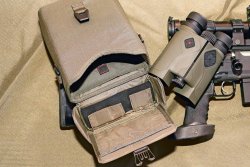
The Swiss are particularly proud of the Vector X's "unrivalled user-friendliness". The D-pad control is intuitive and, together with the Active Matrix OLED display, results in a user interface that is easy to navigate. And indeed, the testers were able to familiarise themselves with the menu navigation and settings after a very short familiarisation period. The four arrow buttons on the D-pad are assigned four pre-programmed settings, known as shortcuts, at the factory. By pressing and holding the respective arrow button, the laser mode LRM or ULM, a timer, activation or deactivation of Bluetooth and a target map are immediately available for selection. The Applied Ballistics Elite ballistics software is installed in the Vector X. One or more customised rifle set-ups can be created beforehand via the app or the Vector X itself. The Applied Ballistics software offers a very extensive database with bullet-specific parameters for this purpose. Sensors on the device itself can measure the air pressure, temperature and angle of inclination. This and other data can also be transmitted to the Vector X from a weather measuring device via Bluetooth. This meteorological data together with the measured distance and the database stored by Applied Ballistics Elite then show all trajectory data and adjustments in MRAD or MOA on the display.
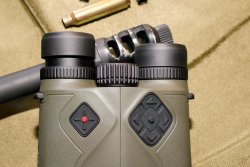
An HUD screen displays the altitude deviation from the firing distance as well as the wind drift for two preset wind speeds and directions as well as other information. In the second HUD screen, the wind speed and wind direction can be changed and adjusted quickly, and the angle of inclination to the target and the bullet flight time to the target are also displayed. The third HUD screen allows up to 30 gun profiles to be created or customised as required. The speed and energy of the selected bullet are also displayed at the measured target distance. The individual HUD screens are selected using the left and right buttons on the D-pad. The brightness of the displayed measurement data can also be adjusted using the buttons.
As mentioned above, the Vector X can also communicate with external weather measuring devices via Bluetooth. The meteorological data measured by these devices is used by the device to calculate and display the flight path. The connectivity also allows data to be transferred from the Vector X to other devices such as Garmin wristop computers; five Garmin models are currently compatible. It is also possible to combine the Vector X with ballistics apps such as the Hornady 4DOF or TRASOL.
Binocular laser rangefinders from Vectronix: technical specifications
Model: | Vector X 8x42 | Vector X 10x42 | Vector X 12x42 |
Objective Lens Diameter: | 42 mm | ||
Magnification: | 8-fold | 10-fold | 12-fold |
Magnification with Boosters (Surcharge 649 euro): | 11-fold | 14-fold | 17-fold |
Field of View at 1,000 m: | 130 m | 110 m | 91 m |
Field of View at 1,000 m with Range Enhancers: | 92 m | 79 m | 65 m |
Dioptre Adjustment: | ± 4 dpt | ± 4 dpt | ± 4 dpt |
Laser Wavelength / Class (US market): | 905 nm / class 1M | ||
Laser Wavelength / Class (EU market): | 905 nm / class 1 | ||
Measuring Range (US Market): | 2 - 6,400 m | ||
Measuring Range (EU Market): | 2 - 4,300 m | ||
Measurement Accuracy (US Market): | ± 1 m (≤ 100 m), ± 2 m (> 100 m < 500 m), < 0.5 % (> 500 m) | ||
Measurement Accuracy (EU Market): | ± 1 m (≤ 100 m), ± 2 m (> 100 m < 500 m), < 0.5 % (> 500 m) | ||
Laser Beam Divergence: | 1.8 x 0.1 mrad | 1.8 x 0.1 mrad | 1.5 x 0.1 mrad |
Compass: | Magnetic compass 360° | ||
Maximum inclination: | ± 89° | ||
Temperature Sensor: | -20 °C – 50 °C | ||
Air Pressure Sensor: | 300 - 1100 hPa | ||
Reticle: | MSR-DMR and MSR-SMR | ||
IP Protection Class: | IP67 | ||
Operating Temperature Range: | -20 °C to 50 °C | ||
Housing Material: | Magnesium | ||
Armouring: | Shock-absorbing rubber | ||
Armouring Colour: | Tac Grey | ||
Tripod Head Connection: | 1/4" x 20 UNC | ||
Dimensions: | 163x130x65 mm | 156x130x65 mm | 169x130x65 mm |
Weight: | 1,013 g | 977 g | 1,015 g |
Power Supply: | 3 V CR123A, optional 3.7 V 18650 battery | ||
Price (RRP): | $2,799 | $2,799 euro | $2,899 euro |
Conclusion: Vectronix Vector X, a versatile device
The new Vector X is a clear buy recommendation from the testers' point of view. Why? Excellent workmanship, use of high-quality materials, very large scope of delivery and accessories, very high measuring distances as well as the acquisition and measurement of meteorological data by integrated sensors, high user-friendliness and the stored Applied Ballistics Elite software and connectivity with other devices should suffice as a reason. We are currently unaware of any other device on the civilian market that can offer such versatility.
Further information can be found on the Vectronix website.


